
The allegory of labor in all its forms, created by Ford Madox Brown, is the most ambitious pre-Raphaelite painting on modern life and a masterpiece of realism of the 19th century. Brown began working on the composition in Hampstead in 1852, at the same time as “Farewell to England” and “Autumn Noon in England”, worked on the canvas for eleven years, finished it in 1863 and demonstrated at a solo exhibition in 1865.
On the canvas is represented by a number of characters, with whom a group of excavators in the center is mapped – and each of them requires a slow, careful thought, as in the Victorian novel. Behind the central group is placed an aristocrat on horseback. He stands in the shade, he is here – unnecessary. The expression of his face suggests a sympathetic interest in the social problems of our time, but he is too far from the action to change the world for the better. Perhaps the most notable figure is an outcast in the extreme left-hand corner of the picture, a barefooted seller of a ragwort and a starlet: rich Victorians used them in floral arrangements and put them in bird cages. This stoop-mouthed fool looks pitiful and at the same time menacing: he looks desperately at the world through the fields of his battered hat.
Brown described him as a “ragamuff, which no one had ever taught to work.” In the concept of labor, a key role was played by gender, in Brown’s view, middle-class women are unemployed, or, most likely, they should not be seen as working in public. The respectable beauty of young years, shading her face from the sun with an umbrella, descends the footbridge on the left, not noticing the working people. Behind her, an impressive middle-aged lady is engaged in charitable affairs. If you look closely, you can see that she gives out brochures about sobriety, entitled: “The Paradise of the Worker, or the Pity for Thirsty Souls.” The author laughs at this character: his sympathies are on the side of a muscular toil, a digger, with a glass of beer: this image echoes the engraving of William Hogarth’s “Beer Street”, which Brown admired.
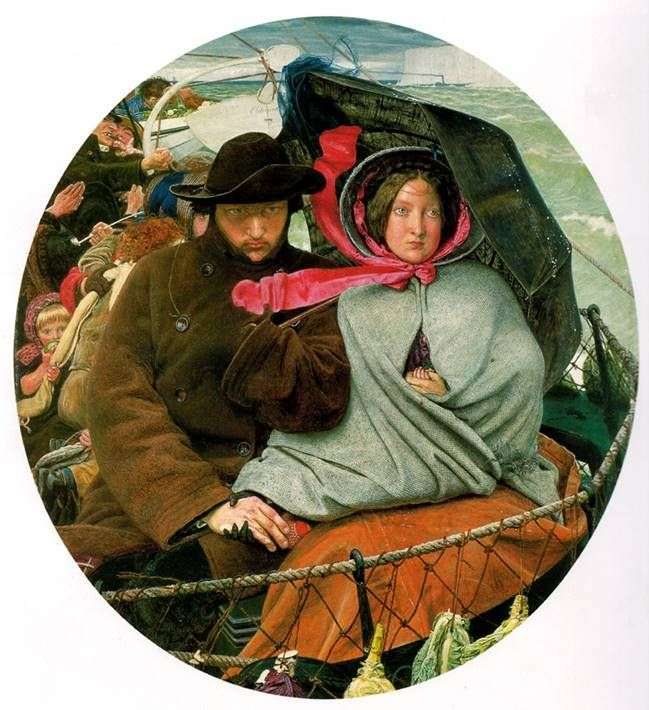 Farewell to England by Ford Madoxon Brown
Farewell to England by Ford Madoxon Brown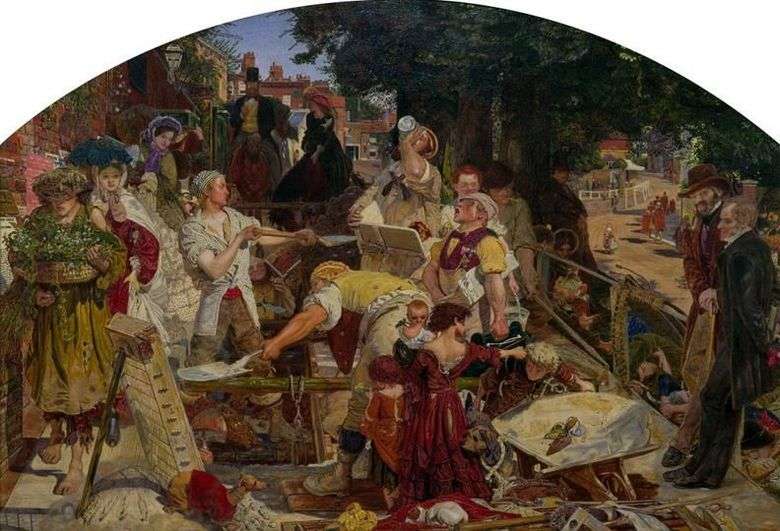 Trabajo – Ford Madoxon Brown
Trabajo – Ford Madoxon Brown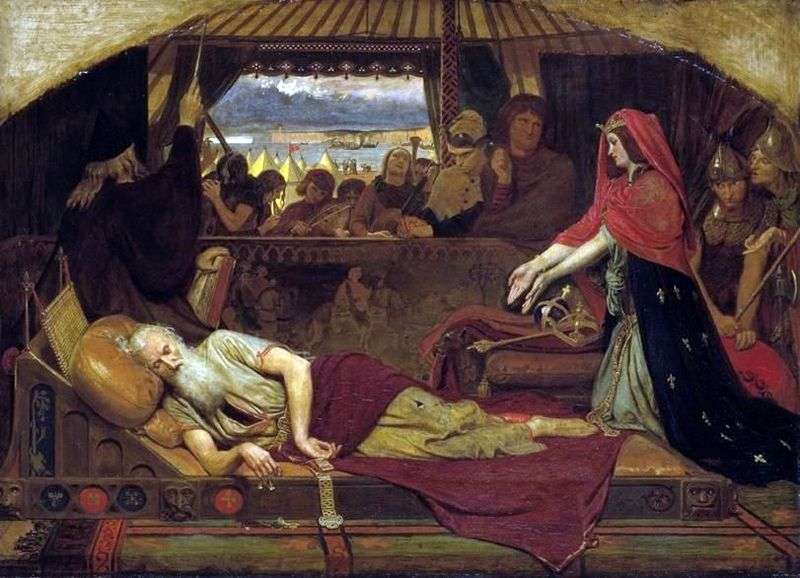 Lear and Cordelia by Ford Madoxon Brown
Lear and Cordelia by Ford Madoxon Brown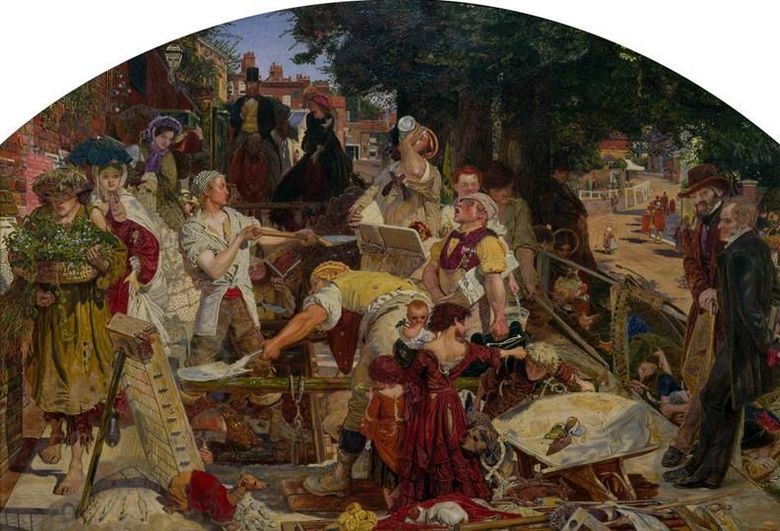 Travail – Ford Madoxon Brown
Travail – Ford Madoxon Brown Jesus washing Peter’s feet by Ford Madoxon Brown
Jesus washing Peter’s feet by Ford Madoxon Brown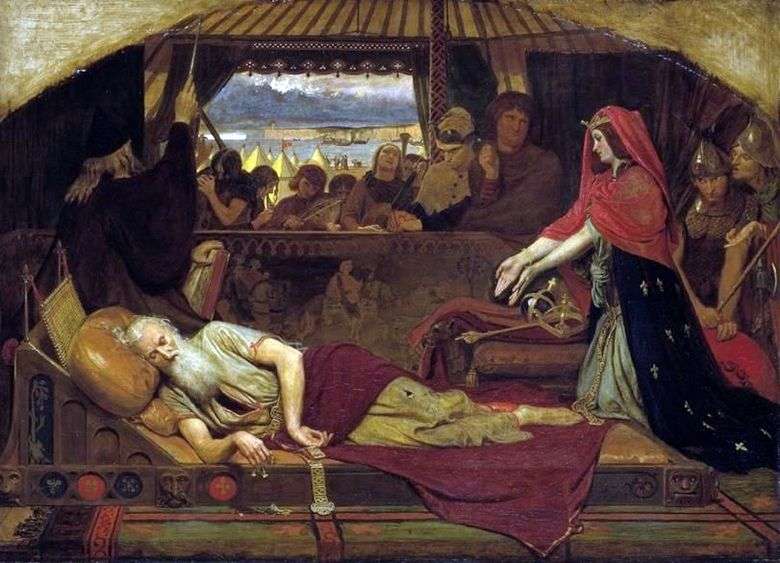 Lear y Cordelia – Ford Madoxon Brown
Lear y Cordelia – Ford Madoxon Brown Jesús lavando los pies de Pedro – Ford Madoxon Brown
Jesús lavando los pies de Pedro – Ford Madoxon Brown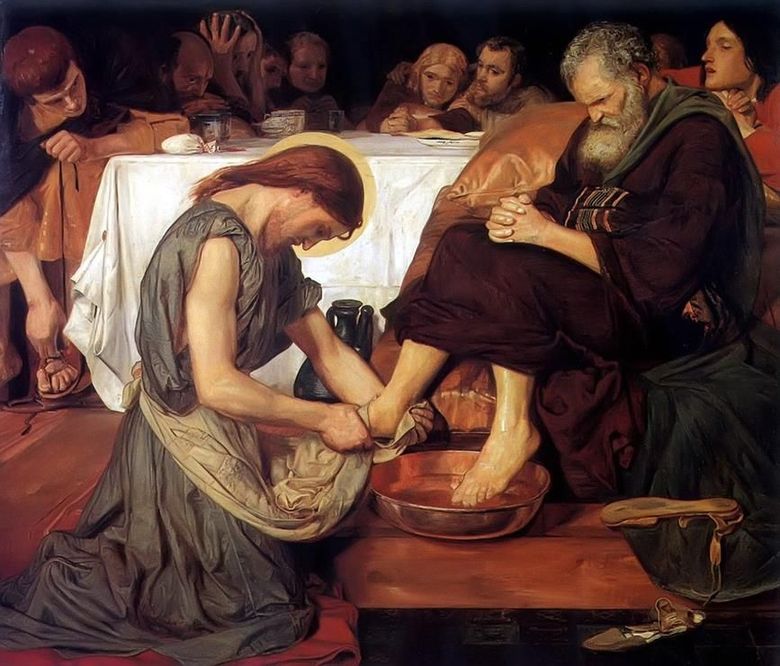 Jésus lave les pieds Peter – Ford Madoxon Brown
Jésus lave les pieds Peter – Ford Madoxon Brown